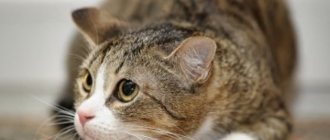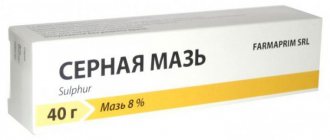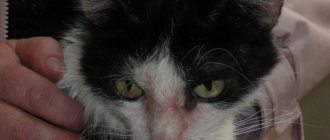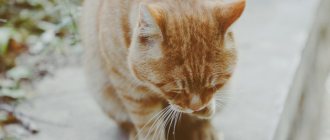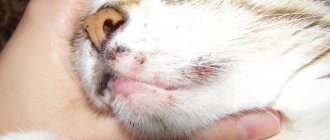Cats are amazingly graceful and freedom-loving creatures. But despite their independence and a certain waywardness in behavior, they are incredibly sensitive and vulnerable animals. There can be many reasons for stress in cats: a trip to the veterinarian, the arrival of a new tenant in the apartment, moving to a new place, being on the road. And it doesn’t matter at all whether this journey turns out to be several days long or an hour-long trip to grandma’s dacha: the animal will worry and experience stress from being in an unfamiliar environment. Of course, there are unique “specimens” of adventurous cats that perceive any movement in an unfamiliar space with joy. However, this is rather the exception that proves the rule: cats have a hard time on the road. A sedative for cats can come to the rescue in such situations. You definitely need to take it on the road.
Why can a cat feel stressed on the road?
For the most part, animals, and cats are no exception, obey the natural instinct of self-preservation. The main principle of this instinct is the ability to control the situation and anticipate danger in time. And four-legged pets can easily cope with this task within the walls of their home - where all the objects and corners have long been studied, the smells are familiar, food and water are within visible limits, and the place to sleep has been agreed upon with the owners. Another thing is the situation while traveling. It can be difficult to manage without sedatives for cats on the road. After all, almost everything, from unfamiliar smells and sounds to the basic uncertainty of its future, frightens the animal. If, in addition, the cat is sensitive by nature or has recently suffered from an illness, then the stress will be even greater. An important factor is the habitat of the furry traveler - if the cat lives in a private house with the opportunity to go outside, then the trip will not be such a severe test. And on the contrary, in the case when the animal did not go further than the staircase, any movement outside will lead it to a state of nervous excitement.
How to cut a cat's hair in a salon
Hairdressers often ask how much it costs to trim a cat, what is the cost and duration of such a session? This is the wrong approach. The first step is to familiarize yourself with the preparatory activities for the procedure. For example, the master will begin the process after the pet has taken a sedative, but aggressive animals will even need sleeping pills. During the haircut, not only scissors and a clipper are used, but also a trimmer, which is capable of efficiently processing the most inaccessible places on the pet’s body.
Advice from veterinarians before traveling
There are several simple recommendations for owners that will help reduce the level of anxiety of the animal. So:
- Cats, as mentioned above, are very perceptive and sensitive creatures. They literally read the mood of their owner. Therefore, before the trip, you need to remain calm: you should avoid fuss when packing your things. Excessive emotionality and excitability will instantly be transmitted to your furry friend. The best solution would be to gradually collect things and not rush.
- It is necessary to take care in advance about choosing a sedative for your cat on the road. It is advisable to give preference to one or another drug after visiting a veterinarian and receiving his recommendations. Reading owner reviews will be a big help.
- Special attention should be paid to the cat carrier - it must be made of high-quality materials and match the size and weight of the animal. If the carrier is not used for the first time, then there are probably odors and animal fur left in it - this will make the task of staying in it easier. If the cat is traveling for the first time, then it is worth putting the purchased house for the road in a visible place so that she can properly examine it.
- It is worth taking care of the animal’s nutrition on the road. There is a possibility that due to stress, the cat will completely refuse to eat. However, food and water should be on hand. Experts also advise bringing your furry friend's favorite treat with you.
- If your cat has a favorite toy or personal bedding, be sure to take it with you on the road. These pieces of home will give you confidence in stressful situations.
How to give a cat sleeping pills
Depending on the purpose, there are several ways to give your pet the necessary drug. If you are planning a long move with your four-legged friend, preparations must begin several days in advance. It is recommended to prepare a special carrying container, which can be purchased at any pet store. A big mistake would be to drive an animal wrapped in a towel or blanket, in your arms or in the back seat. Very often cats feel sick, they begin to worry, get nervous and climb around the cabin.
For an animal, moving is very stressful. To calm your cat, you need to start giving anti-anxiety medications 3-4 days before travel. Homeopathic medicines “Cat Bayun” or “Stop-stress” are well suited for this. They have a gentle effect on the pet’s body, bringing it into a sleepy and calm state. It is also recommended not to feed the cat 16-20 hours before transportation. If the move takes more than 12-14 hours, you need to take dry food and boiled water with you, and before the trip, reduce food portions by 2-3 times.
When treating, sleeping pills for cats are used in the form of injections.
Usually, such medicines are injected into the withers. To do this, you need to immobilize the pet. This can be done with a blanket or towel. If the action is familiar, then the cat can be pressed down a little to the floor, the body pressed between the knees. To give an injection, you need to slightly pull back the withers, insert the needle with a quick movement and gradually press the piston. The whole procedure takes less than 1 minute. Small syringes with a thin needle are used.
Medicines in tablet form are usually taken with food. The tablet can be crushed and mixed with your favorite delicacy, or carefully put the drug into a piece of meat or sausage. Such medications usually have a short-term effect and are used during short-distance transport or when grooming aggressive pets.
Herbal preparations: methods of use
The most popular sedatives for cats in this category are:
- "Fitex" (liquid for instillation). Contains medicinal herbs. This product should not be used if your pet has low blood pressure. Give 3-5 drops in the morning, afternoon and evening. Can be added to food provided it is completely eaten.
- “Stop Stress” (drops) – calming drops for cats. Similar in composition to the drug "Fitex", but also contain phenibut. Used at the rate of 1 kg of animal – 1 drop of product. It should be given in two doses.
- "Cat Bayun" (tablets and infusion). They contain only plant substances and can be given to cats from 10 months. The result is achieved after 5-7 days of use.
- “Fospasim” (liquid for injections and drops). The drug is quite fast acting. Consists of medicinal herbs and mineral components. Injections are administered subcutaneously or into the muscle at a rate of 0.1 ml per 1 kg of animal weight. Drops – 10-15 drops 1-2 times a day. The course lasts about 10 days.
- “Feliway” (in the form of a spray or a bottle with a substance for connecting to an outlet). Its distinctive feature is that it contains pheromone F. The drug is odorless and colorless. Non-toxic.
When can you use sedatives on your cat?
Cats are amazing creatures with sensitive nervous systems. For them, the cause of stress and the development of neurosis can be a change in their usual environment, especially at a young age, as well as puberty. Often cats begin to show aggression if a new pet appears in the house. The reason for stress in furry animals can be childbirth and the period after birth, associated with the fear of losing kittens. Sedatives have a cumulative effect, and to prevent the occurrence of an unpleasant condition, the drug should be given to the cat two weeks before the intended trip. Sedatives should be given to cats with caution. In some cases, the use of a natural sedative is sufficient; in other situations, the use of chemicals or tranquilizers is required, which must be prescribed by a veterinarian.
Symptoms of increased anxiety in a cat include frequent licking of fur and marking territory, aggression towards the owner, family members and oneself, hyperactivity, obsessive movements of the tail, head or paws. A cat's nervous state may be indicated by constant meowing, tearing out fur or sucking tissue, a fixed gaze, gluttony followed by vomiting, and hunting for non-existent prey.
The use of sedatives can reduce stress in your pet and make a difficult period for him more harmless and easily overcome.
Cats are given sedatives for:
- change of place of residence. Cats do not tolerate changes in their environment or home. This is stressful for them, and it takes them some time to adapt to their new place of residence;
- fears and increased anxiety . The cause of excessive nervousness is noisy guests, small children who run after the cat and want to play with it. A cat that can barely tolerate the affection of its owner, with fear and hostility, succumbs to the sometimes unkind stroking of strangers. She doesn’t understand what’s going on around her, what these strangers want, and she develops fears and anxiety. In this case, a sedative is an excellent way to prevent depression in a pet.
- nervous disorders . In some cases, cats experience a progressive nervous or mental disorder without clearly defined causes. In addition to the other characteristic symptoms mentioned above, the pet may experience involuntary head twitching and sudden jumps. Such disorders require examination at a veterinary clinic and the use of not only sedatives, but also medicinal drugs;
- participation in exhibitions, visits to a grooming salon and a veterinarian, vaccinations. Preliminary intake of sedative drops or tablets will allow you to organize the proposed activities more painlessly and without damage to the cat’s nervous system;
- intensive marking of the apartment territory by the cat. Certain sedatives help reduce the desire of cats to leave marks on all corners throughout the apartment, and also suppress the hormonal explosion.
When traveling by car or bus
Moving in any type of vehicle is extremely stressful for a cat. The reasons for depression in pets are a large number of unfamiliar people, unusual smells, noise, hum, and shocks in transport. Panic can also be caused by the owner’s nervous state associated with a long journey, because cats are able to detect mood changes and anxiety in their loved one.
During the flight
It is not recommended to sedate your cat before a flight without the advice of a veterinarian, as this will lead to a decrease in blood pressure, which is dangerous during the flight. When flying with a cat, you can use Feliway, which helps reduce anxiety in cats. Buprenorphine, Gabapentin and Alprazolam are also effective and are also used to reduce anxiety in cats during travel.
After sterilization
Sterilization causes changes in hormonal levels and causes anxiety and aggressiveness in the pet. This condition is also observed in cats during the period of sexual desire and estrus. Special sedatives help eliminate the symptoms of hypersexuality, depression and irritability as a result of changes in hormonal balance. In this case, experts recommend the use of natural-based drugs.
Video - How to calm a cat during heat at home: making a bandage
Drugs with chemical composition
These products can only be used after consultation with a veterinarian and after prescribing the required dosage for each specific cat. They have quite a few contraindications and are used exclusively in emergency situations:
- Buspirone (tablets). An effective remedy for combating stress in cats. However, the effect of the medicine does not begin immediately, but after several weeks of use (about a month). It has the effect of accumulating in the animal’s body. Prescribed for phobias in animals.
- Diazepam is a strong tranquilizer. It quickly calms and relieves aggression in cats, but has a number of contraindications.
- "Vetranquil" (liquid for injections). Very quickly calms down, eliminates excitability and nervousness of the animal. Begins to act in a few minutes.
- "Amitriptyline" (liquid for injections). Used for injection into the muscles and veins of the animal. Has a strong sedative effect. Relieves aggression and severe stress in cats. It works quickly. It has a number of contraindications.
- "Xylazine" (liquid for injections). Has a strong sedative effect. It starts working in a few minutes. It will help relieve the animal’s strong excitability, aggression, and tension. It has a fairly large list of contraindications.
Sleeping pills for cats for transportation
The need to use sleeping pills for cats arises when:
- visiting a veterinary clinic. Some medical procedures can only be performed if the cat is completely immobile;
- rehabilitation after surgery and in the presence of behavioral disorders;
- grooming For a complex haircut, an irritable and active cat will need a sleeping pill;
- transportation. It is quite difficult for a cat to travel long distances. To prevent the development of a stressful condition and make transportation easier for the pet owner, it is recommended to use a sleeping pill.
- Sleeping pills have different durations of action and based on this they are:
- short-term action (2-3 hours). Used to prepare a pet for moving, transportation, and before veterinary procedures;
- medium-term action (4-5 hours). Used to prepare for anesthesia, in the treatment of seizures and severe mental disorders. The compounds in the composition provide muscle relaxation, analgesia and sedation. Rapid addiction is noted;
- long-term action (8-10 hours). These are mainly prescription drugs. Used for complex surgical interventions or veterinary procedures. In addition to sleeping pills, they also have an analgesic effect.
Systematic use of sleeping pills is possible only for serious mental disorders.
Hypnotics used for transporting cats include Vetranquil (0.15 ml subcutaneously), Butorphanol (0.3 ml intramuscular), Relanium (0.3 ml intramuscular), Nalbuphine (0.2 ml intramuscular).
Vetranquil (review and where to put it)
Vetranquil is available as an injection solution, packaged in 50 ml glass ampoules. The drug contains 1 g of acepromazine, 0.5 g of chlorobutanol anhydride and additional substances.
The drug has a pronounced sedative, adrenolytic, hypotensive effect. Used as an antihistamine and antiemetic, it helps eliminate the negative sensations caused by motion sickness in transport. Intravenous injection begins to act after 5 minutes, and intramuscular injection - after 30 minutes.
The use of the medicine is not allowed if you are intolerant or sensitive to the solution or its components, as well as if:
- impaired heart function;
- decreased blood volume;
- unstable blood pressure;
- in a state of shock.
In case of liver failure, reduced immunity and old age of the animal, the drug should be used with caution, reducing the dosage, and under the supervision of a veterinarian.
The dose when administered into a vein is 0.2-0.3 ml, when administered intramuscularly - 0.25--.5 ml. The medication should be stored for 4 years in a dry place, protected from sunlight, with a room temperature of +5 to +20. Shared storage of the medicinal product with food and animal feed is not permitted.
Butorphanol
Butorphanol tartrate (torbujesic, torbutrol, stadol) is a centrally acting analgesic with both agonist and antagonist properties. It is a derivative of morphine. It is often used as one of the means in complex premedication before anesthesia, as well as to control mild or moderate pain. Butorphanol is usually administered at a dose of 0.1 to 0.4 mg/kg subcutaneously, intramuscularly, or intravenously. Pain relief lasts longer in cats than in dogs. There is an advantage of using Butorphanol in cats - it is the absence of agitation.
Relanium
The active component of the drug is diazepam. The auxiliary components included in the drug are propylene glycol, ethanol, benzyl alcohol, sodium benzoate, acetic acid, and water for injection. The drug has a sedative, muscle relaxant, anticonvulsant, hypnotic, and tranquilizing effect.
Nalbuphine
Nalbuphine is an anesthetic drug from the group of opioid receptor agonists-antagonists that prevents the transmission of pain impulses in all areas of the central nervous system. Nalbuphine is intended for parenteral use.
Calming medications for cats help prevent stress and depression in various situations related to moving, or when it is necessary to carry out medical and hygiene procedures. It is necessary to use medications only after consultation with a veterinarian according to a strictly prescribed dosage.
Recommendation for using sedatives for cats on the road
It should be remembered that when choosing a sedative for your furry friend, you need to take many factors into account. You should put the well-being and individual characteristics of the animal first and only then focus on ease of use. Drugs containing chemicals can cause allergies in a cat, so they should be given with caution after making sure your pet is healthy. Products containing components of plant origin are more preferable. However, they can also cause side effects. Therefore, it is worth starting to give them gradually, in small dosages. And, only after making sure that the cat is in good health, continue the course of taking this type of sedative for cats on the road. Often, the effect of homeopathic remedies begins after 1-2 weeks of use.
How cats are cut
Before deciding on such an experiment, you need to choose one of two options: a haircut in a specialized salon or trim your pet yourself at home. In the latter case, it is better not to use a straight razor, especially since special tools and machines for such cases predominate on the open market. If you stock up on them in a timely manner, you won’t need to go to the salon. The main secrets of the home procedure are described below:
- Grooming can change the color and structure of a cat's coat, for example, the hair darkens and becomes rough to the touch.
- It is important to know that this session takes a long period of time, and with an inexperienced groomer it lasts 2-3 hours.
- It is strictly forbidden to trim the hair on the animal's head, paw pads, ears, or trim the whiskers. Otherwise, the cat loses its sense of touch.
- To prevent the cat from injuring the hairdresser, it is recommended to trim his claws in advance and give him a sedative before the start of the session.
- You can dry an animal's new haircut with a hairdryer, but for this you use a warm air flow, not a hot one.
When wondering whether it is possible to cut cats, you need to find out what kind of haircuts they can be, which cats are best suited, how much will it cost the owner in a special salon? The following cat hairstyles are available to choose from:
- A lion. This model can be used to cut Persian, Scottish, and Siamese cats. The body is trimmed, and the hair remains only on the head and the tip of the tail, like a real lion.
- Puma. The hairstyle is similar to the “Lion”, but differs in the remaining hair on the chest. Persian, Siberian, and Scottish cats are trimmed using this principle.
- The Dragon. A distinctive feature of this image is the mohawk on the back, which starts from the withers and ends at the tip of the tail.
Calming for cats on the road: reviews
When choosing a sedative for a cat, many owners are prejudiced against drug reviews on the Internet and do not pay attention to them. There are two sides of the coin: on the one hand, each animal is individual and it is difficult to say in advance what will suit it best. On the other hand, there are drugs with a majority of positive votes, and accordingly, trust in them may initially become higher. In general, reviews about sedatives of herbal origin are good, the owners are satisfied with the results. As for products containing chemicals, the best alternative to choosing a drug, according to reviews, would be a personal consultation with a veterinarian who can accurately calculate the dosage and answer any questions that concern you. It should be remembered that each animal is individual and has a number of distinctive character traits.
Contraindications to the use of sedatives
Do not forget that any remedy, even homeopathic, has a number of contraindications. Therefore, it is still worth giving certain medications, as mentioned above, after consulting a veterinarian. In addition, the use of sedatives during pregnancy, feeding kittens, and under the age of one year will be absolutely prohibited. Contraindications for health reasons include: renal or genitourinary pathologies, problems with blood pressure and vision, periods of illness of the animal. Also, under no circumstances should you give such a popular valerian to cats. Along with catnip, it causes narcotic intoxication and harms the health of the animal.
Contraindications and side effects of sedatives
At home, constant use of sleeping pills for cats is not recommended. Despite the mild effect of homeopathic remedies, their constant use can negatively affect health. Chemicals are used only as prescribed by a veterinarian due to the large number of contraindications. Medicines are not prescribed:
- pets of the first year of life;
- pregnant and lactating cats;
- with diabetes mellitus;
- renal or liver failure;
- low blood pressure;
- diseases of the heart and blood vessels;
- intolerance to the component composition of medications.
Rhinotracheitis in cats: symptoms and treatment at home
Uncontrolled use of medications can cause side effects and addiction to the body. Negative reactions to treatment are presented:
- constant drowsiness;
- irritability, unreasonable anxiety;
- redness and dermatological itching;
- focal or massive hair loss;
- foreign discharge from the nose and eyes;
- attacks of nausea and vomiting;
- digestive disorders, loose stools;
- increased gas formation;
- drop in blood pressure level;
- rapid heartbeat.
Important! The appearance of signs of adverse reactions requires stopping treatment and visiting a veterinarian.
Handy sedatives: how else to help your four-legged friend
Don’t forget that your furry pet, although it sometimes behaves willfully and excessively mannered, depends on warmth and affection. Especially in a stressful situation, when everything familiar is replaced by the unknown and dangerous. Simple stroking and tickling behind the ear will reassure the animal. Warm words of support, spoken in a cat’s native voice, will be a powerful help in the fight against nervous tension. And it doesn’t matter that the meaning of the words will be incomprehensible to the cat - the intonation with which they are spoken, the emotional message, is much more important. After all, only the owner knows how to caress and cheer up his furry friend. And, of course, do not forget about calmness - the animal will intuitively convey the state of its owner. It may be worth taking care not only of a sedative for your cat on the road, but also in case of stress and poor emotional well-being while traveling, purchase a human sedative. Have a pleasant journey and good mood along the entire journey to both the owner and his furry pet!
